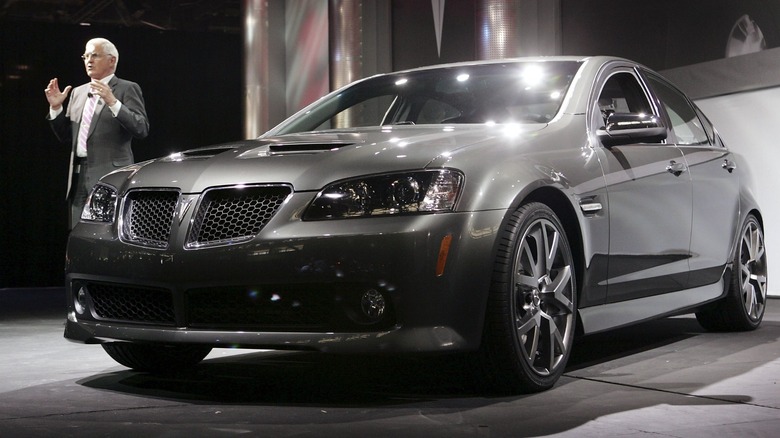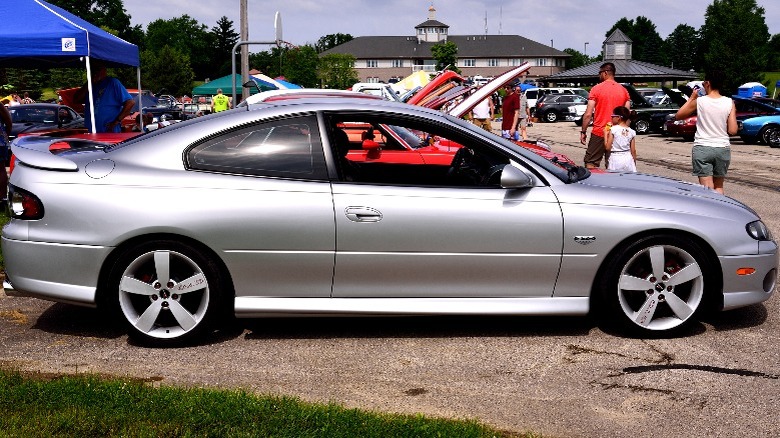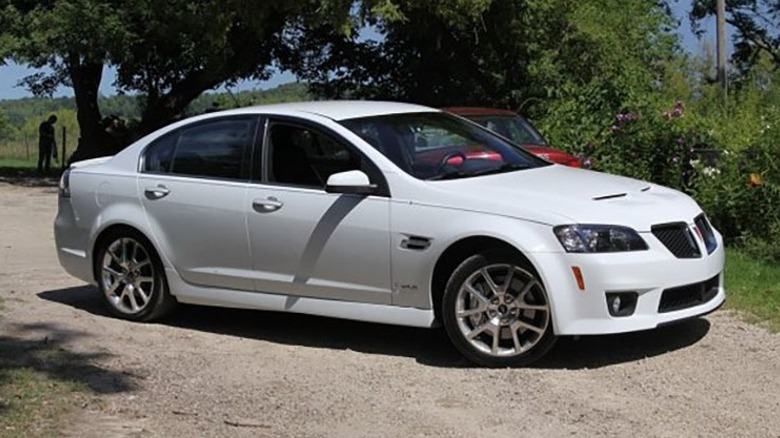Why Did Pontiac Stop Building The G8 GXP, And What Are They Worth Now?
The story of the Pontiac G8 GXP (considered by some to be a future classic) and why it was canceled begins with reinvention. In the early 2000s, General Motors was riding high on the sales of its trucks, but its passenger car sales had been on a steady decline through the 1990s in the face of ever stronger competition from Japanese auto manufacturers. In an attempt to turn around their flagging car sales, in 2001 GM hired industry veteran and father of the Dodge Viper, Bob Lutz, as Vice Chairman and tasked him with reimagining what cars from the automotive giant could be.
Lutz, believing that the Pontiac was well positioned to be General Motors' import fighter brand, and as part of his restructuring plans, began to trim model lines as part of an effort to steer the mark in a new direction. Gone were models like the Grand Am and Grand Prix and their acres of plastic body cladding. They were replaced with the clean-styled Solstice roadster and G6 mid-size sedan.
However, Pontiac lacked a signature vehicle that captured the spirit of what Lutz believed Pontiac stood for – affordable performance. In a bit of creative thinking, he looked to General Motors Australia and its rear-wheel drive Holden Monaro as the perfect partner with which to create its halo car with a storied name — the Pontiac GTO.
The 2004 Pontiac GTO was the conceptual sire of the Pontiac G8 GXP
In 2004, Pontiac reintroduced the GTO brand back into its lineup after a thirty-year absence. Based on the Holden Monaro coupe, it signaled the return of rear-wheel drive cars to Pontiac, bringing joy to fans of the brand who had mourned the loss of the Firebird when it was discontinued two years prior. With a 5.7 liter LS1 V8 under the hood and an available manual transmission, it on paper was an excellent formula to bring back Pontiac loyalists and attract new buyers to the brand.
As is many times the case, the concept did not translate to reality. The GTO was discontinued in 2006 due to lackluster sales, in part caused by its poor critical reception and a total package that didn't resonate with the car-buying populace in the way Pontiac had hoped. Despite the disappointing sales of the GTO, General Motors took the concept of the modern GTO's origin and applied it to introduce another Holden-based vehicle, this time with four doors, that would fill the space formerly occupied by the Grand Prix in the form of the 2008 G8 model line.
The Pontiac G8 GXP fell victim to an economic downturn
Essentially a Holden Commodore with Pontiac badging, the G8 was underpinned by the same zeta platform that would eventually be the basis of the Chevrolet Camaro. With the GXP trim introduced for 2009, the G8 was powered by a 6.2 liter LS3 V8, also used in the Camaro and Corvette, and driven by a six-speed manual transmission. Total sales of the Pontiac G8 line through its two years of production, 2008 and 2009, were a meager 38,159 units. During the lifespan of the G8, only 1,829 G8 GXP models were produced – making it a bit of a rarity. But its meager sales numbers were not the reason the G8 was canceled.
Due to the financial crisis that was in full-swing the year the G8 was introduced, General Motors entered bankruptcy protection. The Federal Government intervened, and mandated GM to restructure in order to receive financial help. As part of the restructuring, Saab, Saturn, Hummer, and Pontiac were all eliminated – and the G8 GXP was gone after only one year of existence.
Today, despite its relative rarity, the price of a used Pontiac G8 GXP varies greatly based on the condition and mileage. An example with over 119,000 miles and an accident repair on "Bring a Trailer" in April 2024 for $23,311, while a clean two-owner example sold on "Bring a Trailer" in January 2024 for $52,000.
[Featured image by Alpha2hz via Wikimedia Commons | Cropped and scaled | Public Domain]


